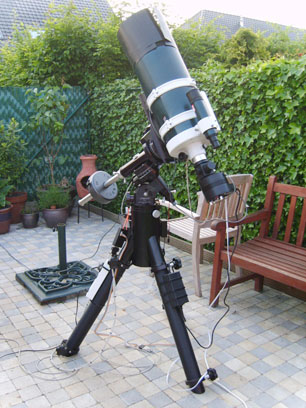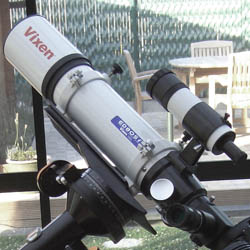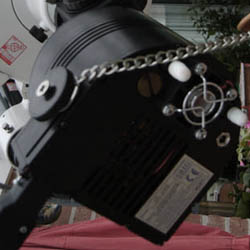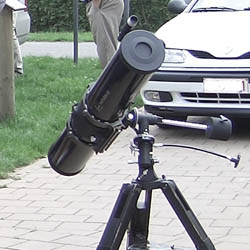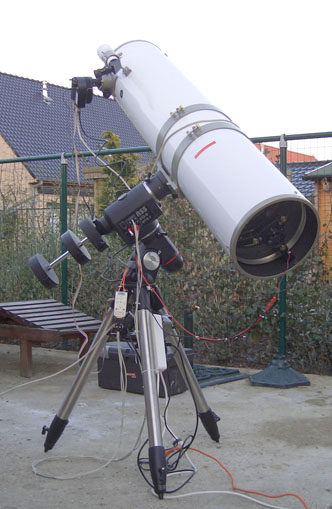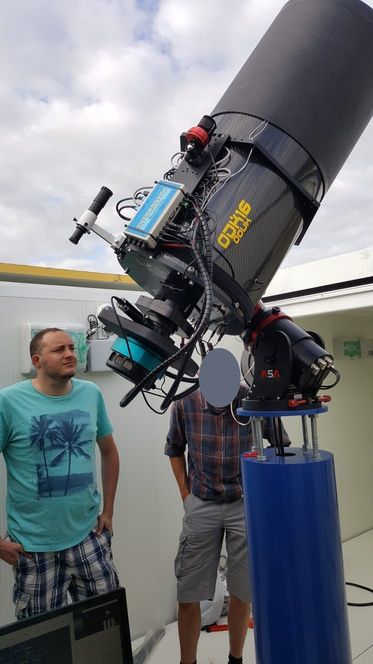
Orion Optics ODK16
When I decided to implement a remote observatory, I decided on an instrument that would be capable of doing astrophotography but should be used mainly for Variables.
The ODK16 is a Corrected Dall-Kirkham design with a focal length of f6.8. It's mounted on an ASA DDM85 direct-drive mount and is equiped with an Apogee KAF16803 chip.
This instrument is used mainly for surveying a wide variety of variable stars.

Celestron C11
The Celestron C11 is a Smith-Cassegrain telescope and was chosen mainly because of it's huge light gathering capability but also for the short tube. It installed on my balcony and the shorter the focal length, the wider my reach is without hitting the railing.
The tube is mounted on a AZ-EQGT and is equiped with a f6.3 focal reducer and an SBIG ST8XME CCD camera. Even from the lightpolluted city this instrument is capable of following variable stars and is used in scientific surveys.
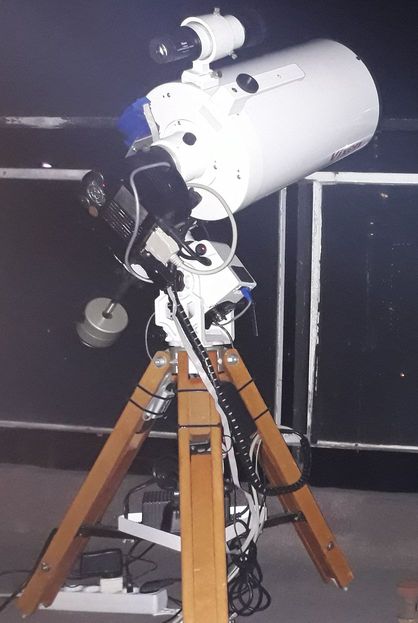
Vixen VMC200L
The Vixen VMC200L is a maskutov design and was mainly chosen for it's short tube. I used it's little brother the VC200L in the past for astrophotography, but that tube proved to be a bit too long and hitted the railing frequently on my balcony. The VMC200L is a lot shorter.
This instrument is mounted on an AZ-EQ5 mount and is permanently installed a SBIG ST8E CCD camera.
